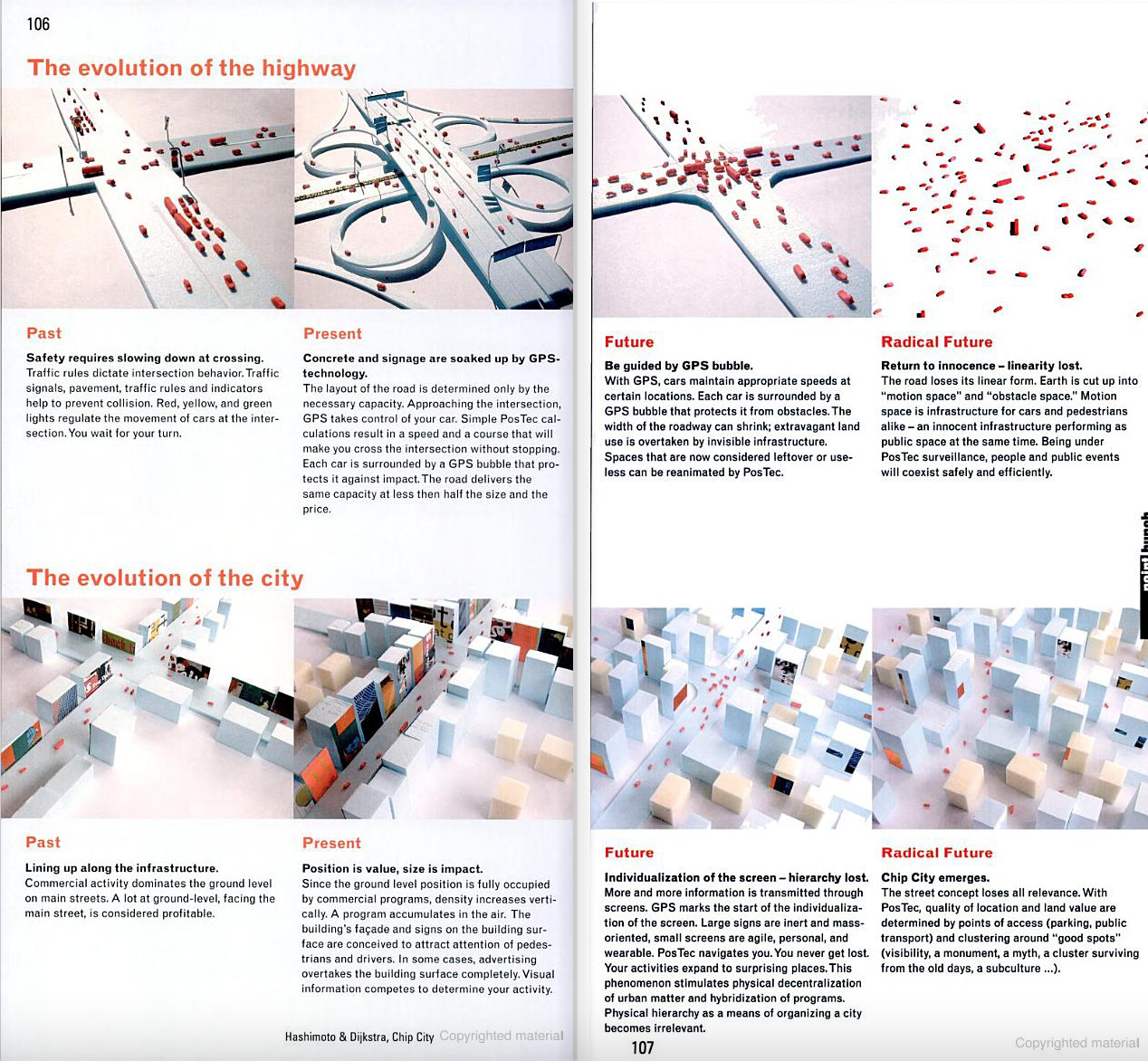Signage, Architecture and Getting Lost.
In one of the discussion on the masterplan with the students, we discussed about an idea of how technology could liberate us from dealing with the issue of redundant signage and unnecessary billboards in front of heritage buildings in Kluang. In the past, shop signage have been respectful and subtle as to not obstruct the architectural facades but it has since changed. Contemporary commercial facades are ‘arrogant’ and dominantly interfering with the historic facades and its detailing. Though could attract more potential customers particularly from the vehicular traffic, the architectural facades, especially those with historical significance should be better appreciated. One good example of how technology could transform the appearance of the city is idea of the Chip City.
The GPS City was based on the thesis by Shinobu Hashimoto developed at the Berlage Institute. A detail account of the proposal was written in Hunch; the Berlage Institute report No. 5 published in 2002. The idea proposed a geo-location strategy using GPS to track peoples whereabouts, communicate with objects (as in the Internet of Things – IoT), and provided the individualisation experience of a city through screens and technology. The Chip City reorganise the city, reducing the hierarchy and democratising the access towards the city. However the most significant aspect of the proposal is the elimination of signage strip to its bare essentials, exposing the architectural features and its ornamentations. Although the proposal at its radical phase could potentially give birth to homogeneous cities across the world, it arouses the idea of a city’s necessities and how we use technology.
To reflect on the idea of Chip City within Kluang, it is necessary to identify how far technology and smartphones have been developed and whether we are ready to adopt it in developing and experiencing the city. One recent headway was the introduction of Metaverse by Mark Zuckerberg of Faceboook where augmented realities or AR could potentially be used as day to day tool in navigating through cities such as Kluang, experience whats available locally in the virtual world, or to just communicate with peers over coffee. The possibilities are limitless, thus students have to think beyond architecture, this studio encourage them to do so.



Leave a Reply